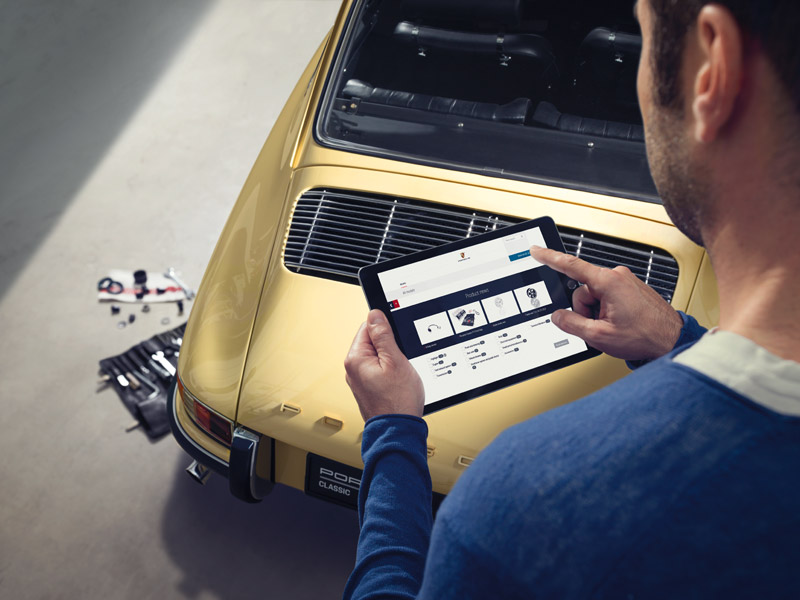
Porsche 928
When designing the 928, which went into series production as of model year 1978, the focus was on lightweight construction. The doors, front wings and bonnet were therefore made from aluminium instead of sheet steel. Behind the plastic bumpers integrated in the body shape there were also aluminium profiles that could withstand a collision at up to 8 km/h (5 mph) without any damage.
The 928 had round, electrically operated pop-up headlights that were integrated in the wings. The rounded fastback was dominated by the large window of the rear lid.
The 928 models were powered by a water-cooled V8 engine with a 90° cylinder arrangement. The displacement of the power unit was increased from an initial 4.5 litres to 5.4 litres. Power was transmitted according to the transaxle principle.
To improve aerodynamics, the models were fitted with a front and rear spoiler from type 928 S (MY 1979) onwards.
The rear axle of the 928 was a completely new development. What made this double-wishbone suspension – also known as the Weissach axle – unique was its toe-in stabilising effect. This worked more or less as a passive rear-wheel steering, making a significant contribution to the active safety of the Gran
928 (MY 1978-82)
The rounded rear end without rear spoiler was an unmistakable distinguishing feature of the 928. Unlike later derivatives, this model did not feature front or rear spoilers. The 4.5-litre engine of the 928 generated 240 hp.
928 S (MY 1980-86)
The 928 S had black front and rear spoilers, side protection strips painted in exterior colour and side direction indicators. The displacement increased from an initial 4.7 litres to 5.0 litres (MY 1986). The power output was 300 hp, increasing to 310 hp as of MY 1984 and 288 hp (with catalytic converter) as of MY 1986.
928 S4 (MY 1987-91)
The 928 S4 featured a rounded front apron with air intakes. The slanting rear end had a black rear wing that projected away from the body between the wide, flush-fitted tail lights. Its 5.0-litre engine produced 320 hp.







